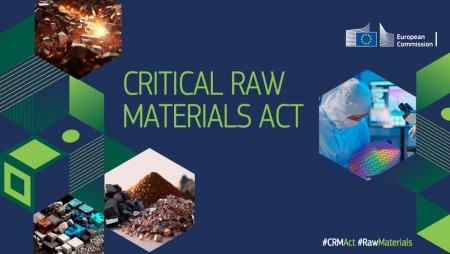The Critical Raw Materials Act (CRMA - Critical Raw Materials Act) has been published in the Official Journal of the European Union
The Critical Raw Materials Act (CRMA - Critical Raw Materials Act) has been published in the Official Journal of the European Union.
„Critical raw materials“ are type raw materials of great economic importance to the EU, with a high risk of supply disruption due to the concentration of their sources and the lack of good, financially affordable substitutes.
The act aims to:
• to increase and diversify the supply of raw materials of critical importance to the EU
• to strengthen circularity, including recycling
• to support research and innovation in the field of resource efficiency and the development of substitutes
The new rules will also strengthen Europe's strategic autonomy.
Why is an EU legislation on critical raw materials needed?
EU demand for base metals, battery materials, rare earth metals, etc. is expected. to increase exponentially as the EU moves away from fossil fuels and towards clean energy systems that require more minerals.
The EU's environmental transition will require the establishment of local production of batteries, solar panels, permanent magnets and other clean technologies. To meet the corresponding demand, it will be necessary to have wide access to a range of raw materials.
The act aims to strengthen all stages of the European value chain in the field of critical raw materials.
What is considered a critical raw material?
Metals, minerals and natural materials are part of our everyday life. Raw materials that are of the greatest economic importance and where there is a high supply risk are called critical raw materials.
Critical raw materials are essential to the functioning and reliability of a wide range of industrial ecosystems.
34 critical raw materials
Some sectors are of particular strategic importance to the EU's renewable energy, digital technologies, space and defense objectives.
The 34 critical raw materials identified refer to materials whose importance is expected to grow exponentially in terms of supply, for which there are complex production requirements and are therefore at greater risk of supply problems:
Aluminum/Bauxite/Alumina
1. Coking coal
2. Lithium
3. Phosphorus
4. Antimony
5. Feldspar
Light rare earth metals*
6. Scandium
7. Arsenic
8. Fluorite
9. Magnesium
10. Silicon metal
11. Barite
12. Gallium
13. Manganese
14. Strontium
15. Beryllium
16. Germanium
17. Natural graphite
18. Tantalum
19. Bismuth
20. Hafnium
21. Niobium
22. Titanium metal
23. Pine
24. Helium
Platinum group metals
25. Wolfram
26. Cobalt
27. Heavy rare earth metals
28. Phosphorite
29. Vanadium
30. Copper
31. Nickel.
Important: This list will be revised regularly
More information on the topic - geopolitics for procurement of critical raw materials; major EU suppliers of critical raw materials; the future of demand (high demand scenario) here
